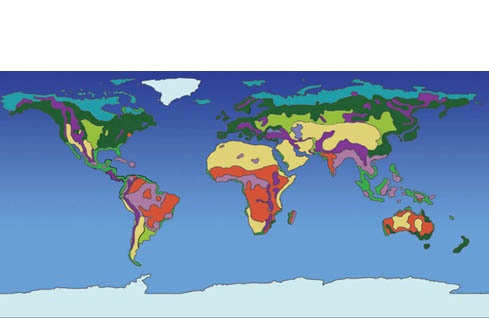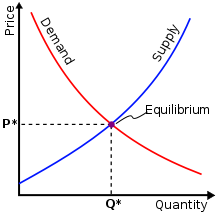The purpose of this assignment is to be well prepared for the coming final exam because we are already covered the possible questions and answers of the material. This assignment will help us better understanding the material.
Chapter 1 – Introduction to Environmental Science
The chapter 1 consist the meaning of the ecosystem services to our lives as well as the natural resources. This chapter is also concentrated on the understanding of the scientific method and importance of the science to our lives as well.
- What is Environmental science?
- Study of how the natural world work, how our environment affects us, and how we affect our environment.
- Study of relationship between organisms and the environment.
- Organism that live in an area and the physical environment with which those organism interact.
- Material that an organism must acquire from the environment to live.
- When did the second industrial revolution begin?
- Mid 1700
- 1800
- 1900
- 2000
- Natural resources that are replenished over short period are known as:
- Renewable natural resources.
- Epiphytes.
- Ecotones.
- Adaptation
- What is environmentalism?
- Social movement dedicated to protecting the natural world and by extension, people from undesirable changes brought about human action.
- Simultaneously change of geographic distributions and undergo the evolutionary process which increases their ability to live in the new climate regime.
- A tentative explanation for an observation, phenomenon, or scientific problem that can be tested by further investigation.
- Changes in vegetation across entire continent.
- What are the two types that environmental science covered?
- Natural & Social
- Evolution & pollution
- Both a and b
- None of them
- The scientific method is technique for testing ideas with observation?
- True
- False
- Experiment in which the researches actively chooses and manipulates the in depended variable is known as Natural experiment.
- True
- False
- Explain the Ecosystem services?
9. Set Up the scientific method (include all parts)?
10. Environmental science that Environmental studies
focus predominantly on the natural
science whereas programs that incorporate
the social science extensively often use the term:
One that borrows techniques Interdisciplinary
from multiple disciplines
And brings their research results
together into a broad
Synthesis is called:
Social movement dedicated to protecting Environmentalism
the natural world and by extension,
people from undesirable changes
brought about human action
Technique for testing ideas Scientific method
With observations is called:
Study of how the natural Environmental science
world work, how our environment
affects us, and how we
affect our environment.
Chapter 2 – Matter, Energy and Geology
The second Chapter is based on the real world situations and how we can influence on by following the science. This chapter also refers to forms of ENERGY that can be found above and below the world’s surface and their structure.
11. What is the geothermal energy?
- Thermal energy from below Earth’s surface
- Transition from one type of ecosystem to another.
- Material that an organism must acquire from the environment to live.
- None of the above
12. Atoms are:
- The smallest units that maintain the chemical properties of the element.
- Epiphytes
- Flowers that can be found in the environment
d. Acid elements from the soil
13. What elements contain geothermal heated water that rises up as steam?
a. Hydrogen
b. Oxygen
c. A & B
d. Calcium
14. Fundamental type of matter, a chemical substance with a given set of properties, which can’t be broken into substances, is called:
a. Element
b. Biodiversity
c. Biosphere
d. None of them
15. What is the chemical formula for water?
a. H2O
b. CO2
c. CH4
d. O3
16. The major forms of energy that scientist commonly distinguish are kinetic and geothermal energy
a. True
b. False
17. Energy is capacity to change the position, physical composition, or temperature of matter.
a. True
b. False
18. Classify the two major forms of energy.
19. Describe the sedimentary rock?
20. When a type of rock is subjected to Metamorphic rock
Great heat or pressure, it may alter it’s
Form becoming
Fundamental type of matter, a chemical Element
substance with a given set of properties,
which can’t be broken into substances,
is called:
Rock that forms when magma or lava cools Igneous rock
Is called
Any natturaly occurring solid element Mineral
Or inorganic compound with a crystal
Structure is called
If magma is released through the lithosphere Lava
It may flow or spatter across Earth surface
Is called
Chapter 3 – Chapter 3: Evolution, Biodiversity and Population Ecology
Chapter 3 deals with the evolution of the biodiversity and also refers to extinction of particular species. On the other hand this chapter gives us knowledge about the organizations that deals with the population ecology, population growth and other important issues of the environmental science.
21. A process by which populations change over time is:
a. Evolution
b. Population
c. Community
d. None of them
22. What type of classification includes the organisms that live in an area and the physical environment with which those organisms interact are called:
a. Ecosystem
b. Epiphytes
c. Ecotones
d. Adaptation
23. What is natural selection?
a. Process by which inherited characteristic that enhance survival and reproduction are passed on more frequently to future generations than those that do not, thus altering the genetic makeup of population through time.
b. The long term geographic isolation of populations that can lead to allopathic speciation can occur in various ways.
c. Each population will independently accumulate its own set of mutations.
d. None of them.
24. The cumulative body of fossils worldwide is now as:
a. Fossil record
b. Desert
c. Savanna
d. None of them
25. What is ecology?
a. Study of relationship between organisms and the environment.
b. A process by which populations change over time.
c. Organism that live in an area and the physical environment with which those organism interact.
d. Material that an organism must acquire from the environment to live.
26. Explain ecosystem theory?
27. Set up the levels of ecological organization?
28. Communities are made up of multiple interacting species that live in the same area
a. True
b. False
29. Ecosystems focus on patterns of species diversity and on incarnations among spices, from one to one interaction to complex interrelationship involving entire community.
a. True
b. False
30. The ecology that focus Community ecology
of species diversity and on incarnations
among spices, from one to one interaction
to complex interrelationship involving entire community
Is called:
Encompass communities and the abiotic Ecosystem
Material and forces with which their member
Interact is called:
The reveals patterns, such as the flow Ecosystem ecology
Of energy and nutrients, by studying
Living and nonliving components of system in conjunction
Is called:
Process which population change over time Evolution
Is called:
The cumulative body of fossils Fossils record
Worldwide is now as
Chapter 4 – Species Interactions and Community Ecology
Chapter 4 deals with the energy flow and potential collision on a society by some species.
31. Which biome lies between 10 degrees latitude north and south of the equator?
a. Desert.
b. Tropical rain forest.
c. Savanna.
d. Mediterranean woodland.
32. In which biome you can find the permafrost?
a. Tundra.
b. Rain.
c. Boreal Forest.
d. Mediterranean climate.
33. What are the things by which one can distinguish the biomes?
a. Flowers.
b. Rain and sun.
c. Plants and climate.
d. Pans and soil.
34. In Which biomes lies Greece?
a. Desert.
b. Temperate grassland.
c. Savanna.
d. Mediterranean Woodland.
35. Process by which individuals of one spices hunt, capture, kill, and consume individuals of other spices is called:
a. Predation.
b. Parasitism.
c. Herbivory.
d. Pollination.
36. Illustrate the climate in the Boreal Forest biome.
37. Explain the coevolution process?
38. Relationship In which one organism is harmed Amensalism
And the other is unaffected is called
Soil at or below the freezing Permafrost
point of water for two or more years
Hot summer and cool winter Chaparral
Dry 6-7 months, abundant Tropical dry forest
rainfall 5-6 months
Warm and wet year-round Tropical Rain Forest
39. Parasitism is a relationship in which one organism, depends on another, for nourishment or some other benefit while simultaneously doing the host harm
a. True
b. False
40. Savanna is the biome that covers the geographic area painted in yellow.
a. True
b. False
Chapter 6- Environmental Ethics and Economics: Values and Choices
Chapter 6 explains the tight connection between the economies and ecosystem services. The theories of the economic growth are also part of this chapter and explain their impact on the environment.
41. Use the picture below to explain the ethical perspectives of people.
42. Explain the graph below
43. Environmental ethics is the application of ethical standards to relationships between people and nonhuman entities.
a. True
b. False
44. Ecolabeling is the method that serves to inform environmentalists whether the making of one particular product is harming the environment.
a. True
b. False
45. The argument that the patriarchal Ecofeminism
structure of society is a root cause of both
social and environmental problems.
Earth’s ecological systems purify Ecosystem services
air and water, form soil, cycle nutrients,
regulate climate
The amount of a product offered Supply
for sale at a given price
The amount of a product people Demand
will buy at a given price
Cost or benefits that affect people Externalities
other than the buyer or seller
46. The discipline that applies both principles of ecology and system science to the analysis of economic systems
a. Ecological economics
b. Environmental economics
c. Steady-State economies
d. All of the above
47. Values not usually included in the price of a good or service
a. Nonmarket values
b. Environmental economics
c. Contingent valuation
d. None of the above
48. When does market failure occurs
a. When we don’t take into account the environmental principles
b. By not buying ecolabeled products
c. When costs equal profit
d. None of the above
49. The value that teach us about ourselves in the world is called
a. Educational value
b. Use value
c. Cultural value
d. Option value
50. GDP is
a. The total monetary value of final goods and services produced each year
b. Governmental policy
c. Value of unfinished goods
d. How many goods has one country exported for a year
Conclusion
This assignment is really challenging for the students as a whole. We are all supposed to cover all the material from the particular chapters however determine the most important questions and their answers. The assignment will help us better understand the material and be aware of the environmental problems and solutions by using the purposes of the Ecological advances. In our opinion we maintain the obligations to our environment as citizens of planet Earth.
Group partner http://eco110dejan.wordpress.com/



Mar 28, 2011 @ 20:30:12
I found your question realy intresting and quite challenging, keep up the good work!